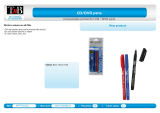
3
Contents
Introduction to the Easy Interactive Tools Software ................................................................................ 5
Easy Interactive Tools Features........................................................................................................... 5
Drawing on a Plain Background (Whiteboard Mode) ....................................................................... 5
Drawing on the Projected Image (Annotation Mode) ....................................................................... 6
Other Interactive Functions ............................................................................................................. 6
Setting Up the Software for the First Time ................................................................................................ 8
Easy Interactive Tools System Requirements...................................................................................... 8
Installing the Software .......................................................................................................................... 9
Installing the Easy Interactive Tools Software (Windows) ............................................................... 9
Installing the Easy Interactive Tools Software (Mac) ..................................................................... 10
Using the Easy Interactive Tools Software ............................................................................................. 11
Preparing to Use the Software with Your Projector ............................................................................ 11
Starting the Easy Interactive Tools Software...................................................................................... 12
Operating the Interactive Pen............................................................................................................. 13
Finger Touch Operations.................................................................................................................... 15
Drawing Screens and Modes ............................................................................................................. 15
Drawing in Whiteboard Mode ........................................................................................................ 19
Changing Between Full Display and Window Display............................................................... 21
Drawing in Annotation Mode.......................................................................................................... 21
Adjusting and Editing Shapes and Images .................................................................................... 22
Toolbar Submenu Options ........................................................................................................ 24
Enlarging an Area.......................................................................................................................... 25
Shading an Area............................................................................................................................ 25
Turning a Spotlight on an Area ...................................................................................................... 26
Drawing Across Two Screens........................................................................................................ 26
Operating a Mouse from the Projected Image (Mouse Operations)............................................... 28
Saving the Screens to a File............................................................................................................... 28
Supported File Types .................................................................................................................... 28
Using the Software with a Document Camera.................................................................................... 30
Using the Slideshow Drawing Tools ................................................................................................... 30




















